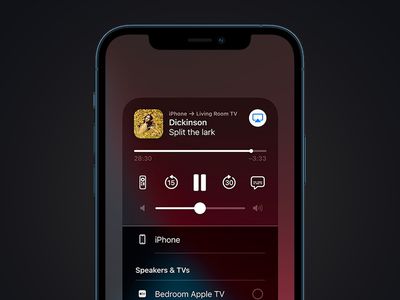
Social Media Surprise: What's Not in Your Feed?

Social Media Surprise: What’s Not in Your Feed?
Facebook is trying to be more transparent about the metrics they use to rank content that users see on their feeds. The social media giant is looking to refine the content permitted on the platform, first with the release of its Community Standards, which details the type of content allowed on Facebook.
Now, with the release of its Content Distribution Guidelines, it has gone a step further by showing how it distributes content in News Feeds.
So, what are these guidelines and why do they matter? Most importantly, how will they affect your Facebook experience? Let’s find out.
What Are Facebook Content Distribution Guidelines?

Following mounting criticism of Facebook’s privacy flaws and data breaches, the release of its Content Distribution Guidelines is clearly an attempt to re-establish public trust in the social media giant.
Related:Facebook Will Soon Advise Teenagers to “Take a Break” From Instagram
Until now, it was unclear how Facebook decides which content to elevate or demote in users’ News Feeds. It has always been a hit or miss for content creators to have their work ranked high in News Feed. That’s why the publication of Facebook’s Content Distribution Guidelines is such a positive development. With these guidelines, Facebook reveals important information about how the News Feed works to content creators and the general public.
The content guidelines outline the 28 types of content that Facebook restricts, as well as the reasons for their limited coverage. The affected content is divided into three categories:
- Content that is restricted based on users’ direct feedback
- Content that is restricted to incentivize creators to invest in higher quality and accurate contents
- Content that is restricted to foster a safer community
This guideline aims to clarify Facebook’s algorithm decision-making process when determining which posts will or will not have restricted visibility on News Feed. This process is typically automated and occurs without informing the creator of the affected post.
Related:How Do Social Media Feed Algorithms Work?
To help you avoid a censorship strike, we will provide a broad overview of the contents that fall into those categories.
Content That Is Restricted Based on People’s Direct Feedbacks
The restricted content in this category is based on feedback from Facebook users on posts that they find disruptive. Facebook’s research and surveys on what users prefer and dislike help them develop appropriate guidelines. This category includes the following posts:
Posts containing links to websites that are not user-friendly and contain web pages with a lot of auto-playing ads.
Clickbait posts with headline links that make exaggerated claims about the article’s content. Posts with headlines such as “You won’t believe…” or “You’ll never guess…” are examples.
Posts that serve as user engagement bait and solicit likes, shares, tags, and comments.
Posts containing links to websites that ask for unnecessary user data or redirect users to a different landing page.
Posts with links to websites that do not work, are not mobile-friendly, and contain an error message showing that the web page has been removed.
Pages that look like spam and include false advertising, malware, and phishing posts.
Events that are of poor quality and lack key details such as time, location, or sign-up information.
Static images that have been uploaded as “videos” but do not contain any audio.
Pre-recorded, static, looping, or poll-only videos that are posted as “live broadcasts.”
Post containing exaggerated health claims about “miracle cures.”
Content Restricted to Incentivize Content Creators to Invest in High-Quality Content
![]()
Facebook has restricted the distribution of posts in this category to encourage publishers to produce original and interesting materials. According to Facebook guidelines, original content includes posts with exclusive source materials, new interviews, in-depth analysis, or contains original visuals. Here are some of the red flags to look out for:
- Post links to articles that have content that has been copied from or is very similar to another source.
- Posts containing content that has been proven to be false or manipulated by third-party fact-checking organizations.
- Pages that engage in excessive and inauthentic sharing in order to artificially increase views and engagements. This includes the coordinated artificial distribution of the same content across seemingly independent pages at a high rate. Also, posts from people who frequently hyper-share into groups.
- Posts containing links to websites that receive a disproportionate amount of their source traffic from Facebook in comparison to other sites.
- News articles that do not contain relevant information about the author and the publishing editorial staff. Facebook considers editorial transparency to be one of the most obvious indicators of credibility.
- Posts from news publishers that are rated untrustworthy in on-platform surveys.
- News articles that don’t contain any new or original reporting or analysis.
Related:Is Facebook Doing Enough to Tackle Misinformation?
Content Restricted to Foster a Safer Community
Because of Facebook’s enormous influence and the ease with which certain content can go viral, the security implications of every post are critical. So, content deemed “problematic” by the Facebook community is purposefully made more difficult to view. This category includes the following items:
- Posts containing well-known hate terms, graphic violence, adult nudity, and sexual activity.
- Posts that are tailored to not violate Community Standards guidelines but contain borderline sexually explicit or violent content.
- Posts that promote services or goods that are prohibited by Facebook’s Regulated Goods Community Standards .
- Posts by groups affiliated with prone-to-violence conspiracy groups such as QAnon.
- Posts that do not violate COVID-19 or vaccine policies but provide misleading vaccine information.
- Posts by repeat Facebook policy violators.
- Posts from people who have multiple accounts.
- Posts that describe suicide in a celebratory or promotional way.
- Posts that receive an unusually high number of views, particularly from users outside the poster’s country.
How Will This Affect Your Facebook Experience?
These guidelines are useful blueprints for content creators to avoid censorship strikes on their Facebook posts and pages. The policy makes a lot of sense, and a lot of false and unoriginal content should be much more difficult to find. Facebook says it will continue to update these guidelines, and the goal appears to be to improve the quality of content on its platform. Creators with legitimate profiles and those who strive to produce quality content can use this to increase the reach of their posts.
If you’re a Facebook regular who’s wondering how this will affect your browsing experience, don’t despair. Facebook’s measures aim to improve users’ safety by distributing accurate, harmless, and valuable content. If Facebook implements these guidelines effectively, you can expect a more pleasant News Feed that is tailored to your interests thanks to Facebook’s now not-so-mysterious algorithm.
- Title: Social Media Surprise: What's Not in Your Feed?
- Author: Michael
- Created at : 2024-08-28 03:01:26
- Updated at : 2024-08-29 03:01:26
- Link: https://facebook.techidaily.com/social-media-surprise-whats-not-in-your-feed/
- License: This work is licensed under CC BY-NC-SA 4.0.


 With Screensaver Wonder you can easily make a screensaver from your own pictures and video files. Create screensavers for your own computer or create standalone, self-installing screensavers for easy sharing with your friends. Together with its sister product Screensaver Factory, Screensaver Wonder is one of the most popular screensaver software products in the world, helping thousands of users decorate their computer screens quickly and easily.
With Screensaver Wonder you can easily make a screensaver from your own pictures and video files. Create screensavers for your own computer or create standalone, self-installing screensavers for easy sharing with your friends. Together with its sister product Screensaver Factory, Screensaver Wonder is one of the most popular screensaver software products in the world, helping thousands of users decorate their computer screens quickly and easily.